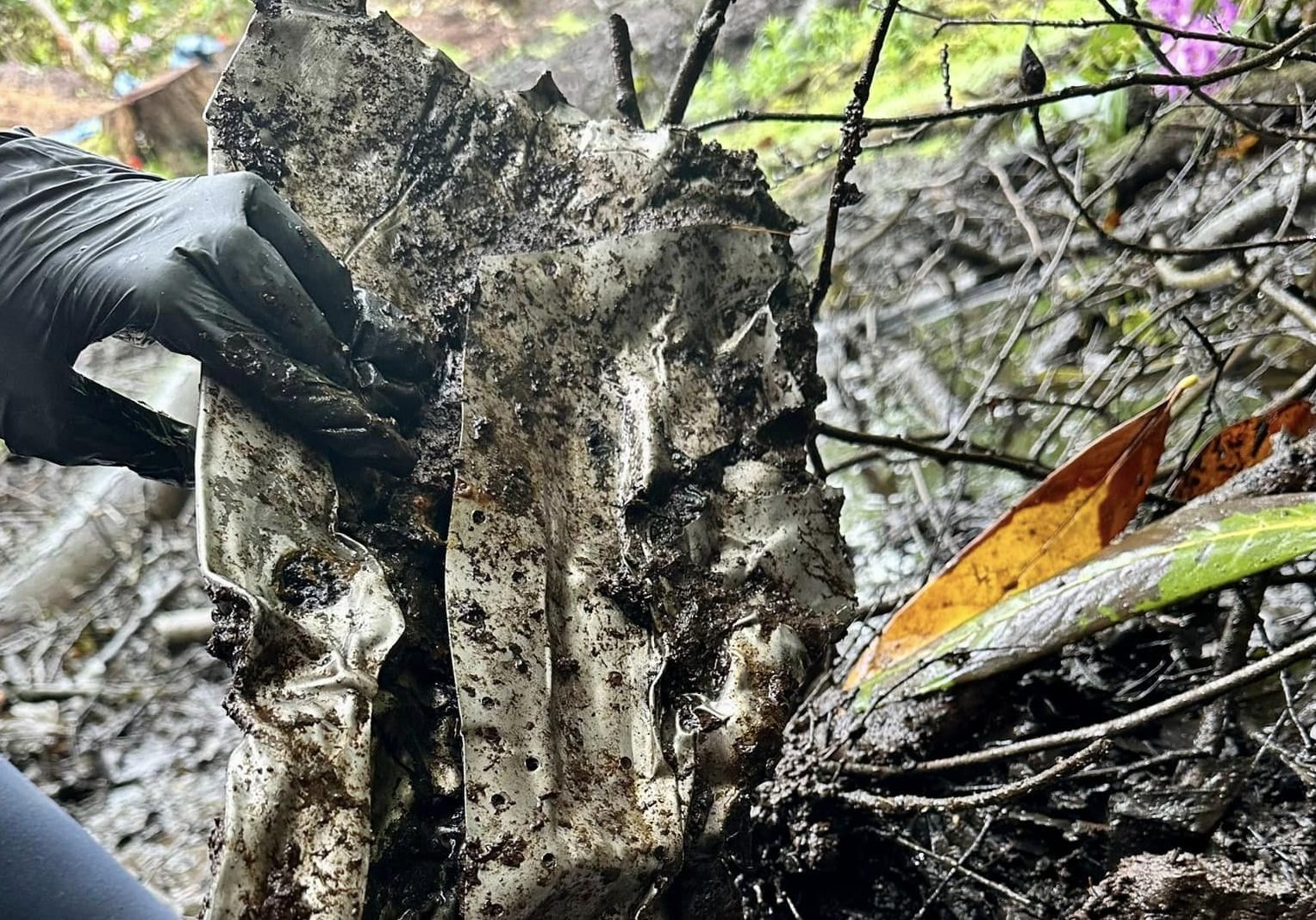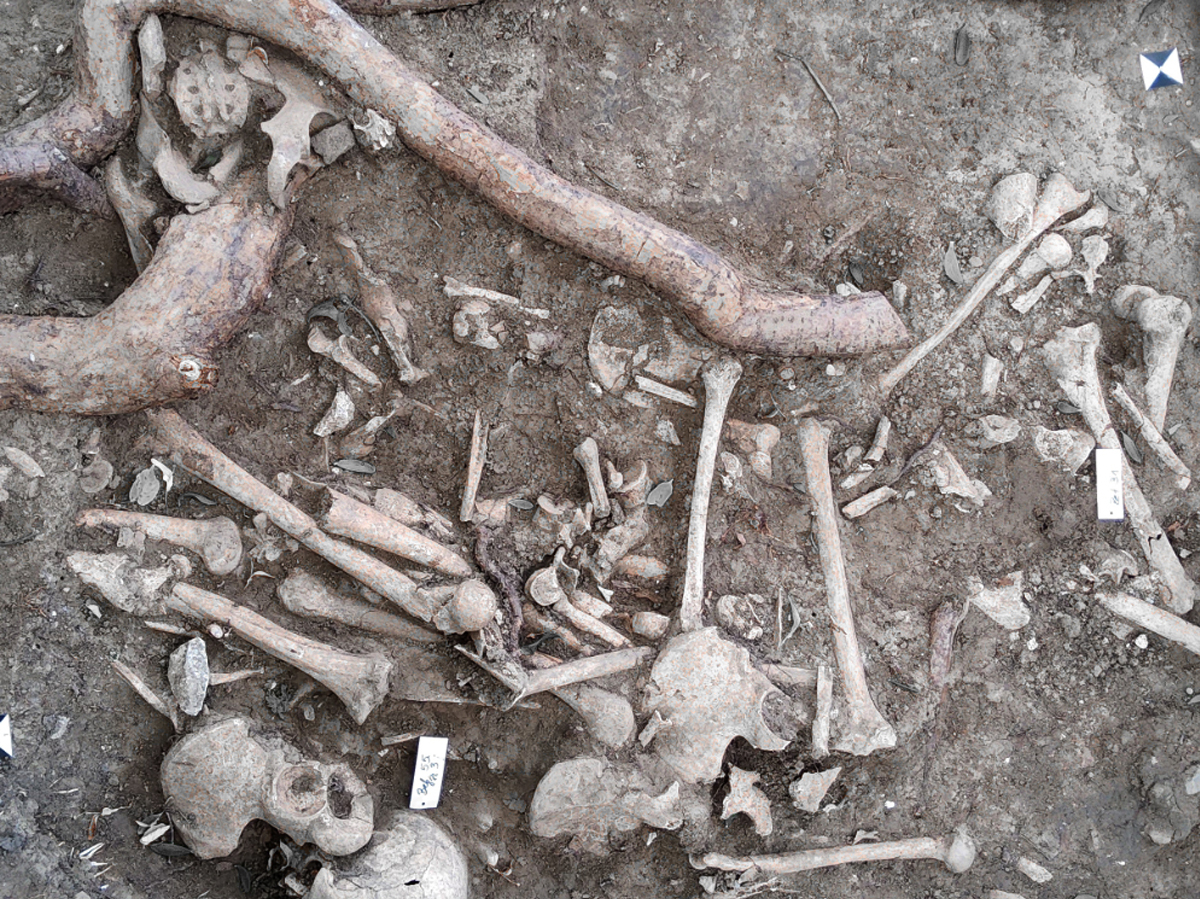Archaeology
Archaeologists search crash site of WWII B-17 for lost pilot

Archaeologists from Cotswold Archaeology are excavating the crash site of a WWII B-17 Flying Fortress in an English woodland.
The B-17 Flying Fortress is an American four-engine heavy bomber aircraft developed in the 1930s for the United States Army Air Corps (USAAC).
The bomber was mainly used in the European theatre for daylight strategic bombing, complimenting the RAF Bomber Command’s night bombers in attacking German industrial, military and civilian targets.
Cotswold Archaeology have been tasked by the Defense POW / MIA Accounting Agency to search the crash site for the remains of the pilot, who died when the B-17 crashed following a system failure in 1944.
Image Credit : Cotswold Archaeology
At the time, the plane was carrying a payload of 12,000lbs of Torpex, an explosive comprised of 42% RDX, 40% TNT, and 18% powdered aluminium. Torpex was mainly used for the Upkeep, Tallboy and Grand Slam bombs, as well as underwater munitions.
The pilot was declared MIA when the plane exploded into an inferno, however, using modern archaeological techniques, the researchers plan to systematically excavate and sieve the waterlogged crash site to recover plane ID numbers, personal effects, and any surviving human remains.
It is the hope of the excavation team members that they will be able to recover the pilot’s remains and return him to the United States for burial with full military honours.
The Defense POW/MIA Accounting Agency (DPAA) is an agency within the U.S. Department of Defense whose mission is to recover unaccounted Department of Defense personnel listed as prisoners of war (POW) or missing in action (MIA) from designated past conflicts.
Header Image Credit : Cotswold Archaeology
Sources : Cotswold Archaeology
This content was originally published on www.heritagedaily.com – © 2023 – HeritageDaily
Archaeology
Ornate grave goods found in Murom burial ground
Archaeologists from the Institute of Archaeology of the Russian Academy of Sciences have been excavating a burial ground associated with the Finnic Muromians.
The Finnic Muromians were groups of settlers that lived within the vicinity of the Volga and Oka rivers. They spoke Muromian, an Uralic language that became extinct following their assimilation by the Slavs.
The burial ground, which dates from the early 10th century AD, was discovered on the eastern bank of the Oka river, located in the Nizhny Novgorod Region of Russia.
A total of seventeen burial pits have been identified, nine of which have been severely damaged through looting.
The surviving 8 burials contain the remains of four children, two women, and two men.
The men were accompanied with an ornate collection of grave goods, including arrowheads, knives, bronze bracelets, iron plates, a bronze buckle, and a whetstone.
At the bottom of one of the pits is a heavily corroded axe, along with a flint that has traces of iron-coated embossed leather and textile threads.
The burials containing women were also accompanied with high status funerary goods, such as a necklace of red-brown prismatic and dark blue berry-shaped beads of Byzantine origin, signet ring-shaped pendants, plate bracelets, a bronze spiral, and a silver ring.
Traces of wood within the pit fillings suggest that they originally contained a wooden structure, similar to a log house made of thin beams and covered with birch bark.
According to the Institute of Archaeology of the Russian Academy of Sciences: “The culmination of the discoveries at the site were two clay vessels, testifying to direct and close contacts between the right-bank Muromians and the Old Russian population.”
Header Image Credit : Institute of Archaeology of the Russian Academy of Sciences
Sources : Institute of Archaeology of the Russian Academy of Sciences
This content was originally published on www.heritagedaily.com – © 2023 – HeritageDaily
Archaeology
Ghastly finds at gallows execution site

Archaeologists from the State Office for Monument Preservation and Archaeology of Saxony-Anhalt are currently excavating the site of a former gallows in Quedlinburg, Germany.
Gallows are usually wooden structures made of two vertical posts, a horizontal crossbeam, and a hanging noose. They have been used for executing criminals by hanging, a prevalent form of capital punishment in Europe since the Middle Ages.
Archaeologists are currently excavating a gallows site on Galgenberg, or ‘Gallows Hill,’ which was used for public executions by the courts in Quedlinburg from 1662 to 1809.
Excavations have revealed complete and partial burials in the area, along with bone pits containing multiple bundled burials, likely the result of mass executions carried out in a short period.
Image Credit : LDA
According to the State Office for Monument Preservation and Archaeology of Saxony-Anhalt, “these discoveries provide unique insights into penal practices from the Middle Ages and early modern times.”
A burial unrelated to the gallows has also been unearthed, featuring a wooden coffin containing the skeletal remains of an individual buried with a rosary chain.
Archaeologists propose that the burial’s characteristics suggest that the individual was likely a suicide victim, denied burial in consecrated ground so was placed in the cemetery near the gallows.
Also discovered is a so-called ‘revenant grave’, where the skeletal remains of a man was found placed on his back with several large stones placed across his chest.
According to the researchers, the stones were likely placed to prevent the individual from rising as a revenant, which are described as animated corpses in the verbal traditions and lore of many European ethnic groups.
In medieval times, those inflicted with the revenant condition were generally suicide victims, witches, corpses possessed by a malevolent spirit, or the victim of a vampiric attack.
Header Image Credit : LDA
Sources : State Office for Monument Preservation and Archaeology of Saxony-Anhalt
This content was originally published on www.heritagedaily.com – © 2023 – HeritageDaily
-

 Ghosts2 years ago
Ghosts2 years agoZozo: The Ouija Board Demon
-

 Space2 years ago
Space2 years agoScientists claim to have found the answer what existed before the Universe
-

 Ghosts2 years ago
Ghosts2 years agoOld Coot of Mount Greylock
-

 General3 years ago
General3 years agoUC San Francisco engaging in horrifying experiments, organ harvesting of live babies in the name of “science”
-
Archaeology2 years ago
New discoveries at Ekʼ Balam during conservation works
